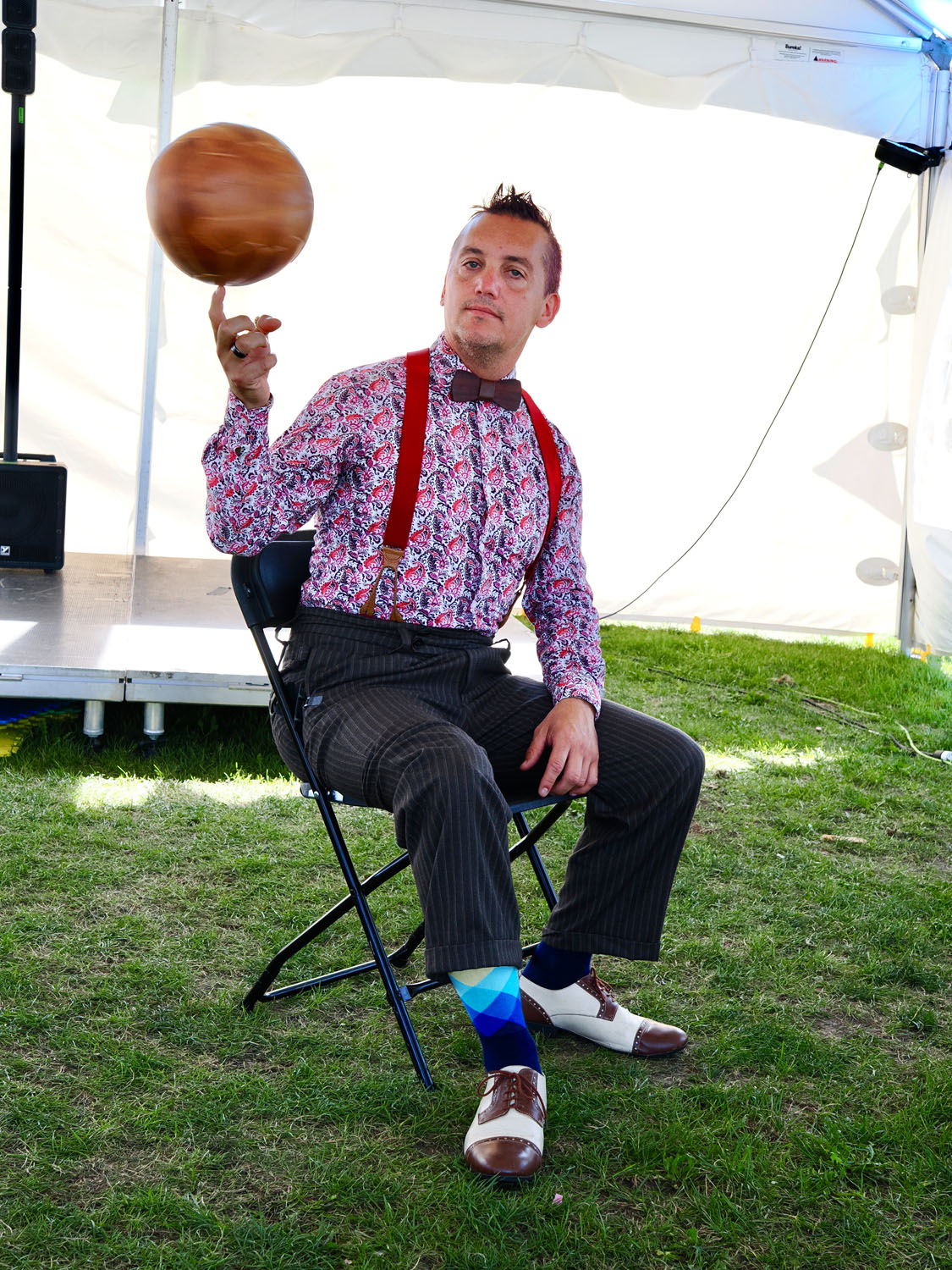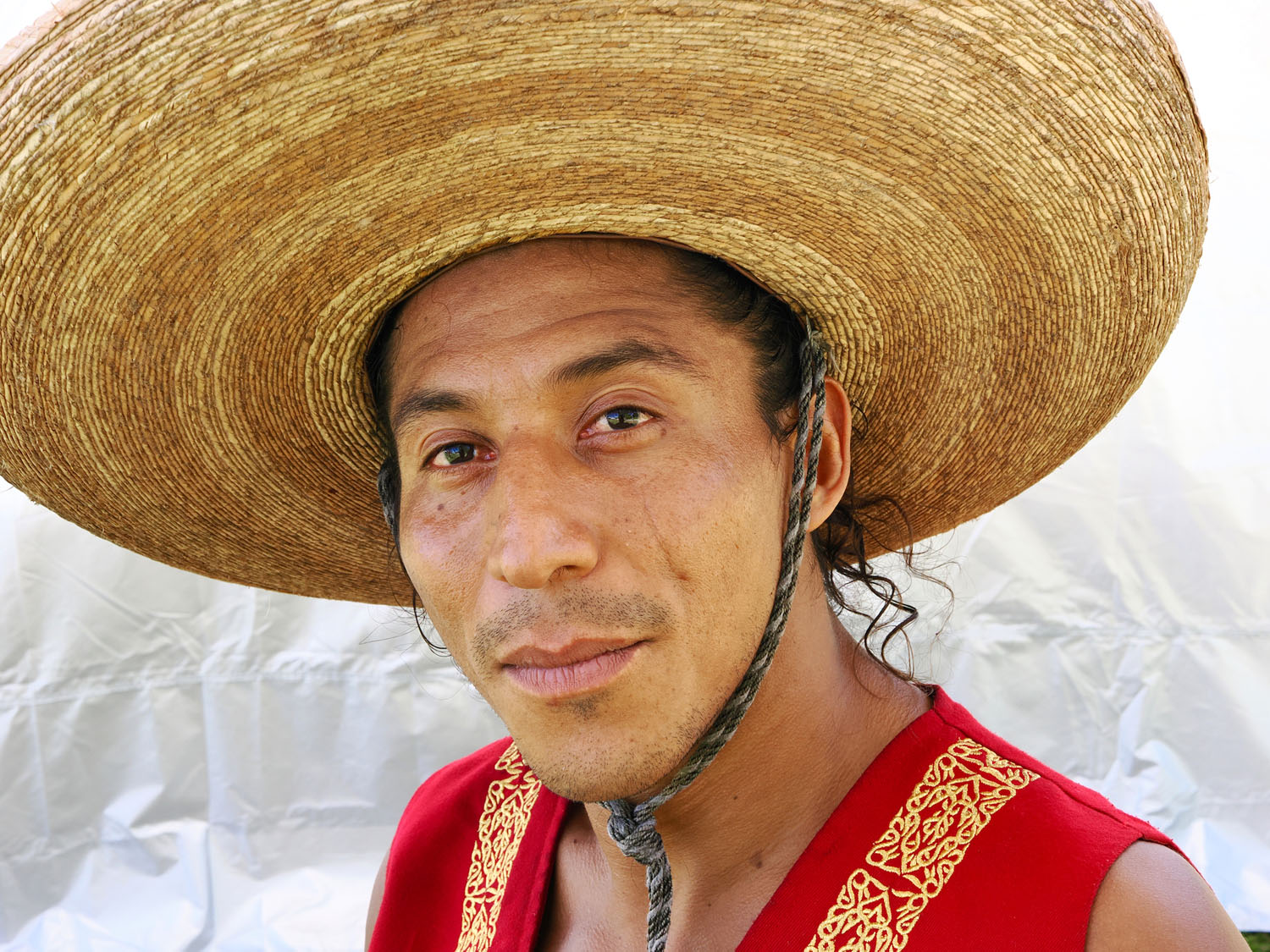Capturing the Soul of Buskerfest

I read in the newspaper that Buskerfest was coming to town for three days. I immediately knew this was exactly the kind of photo opportunity I love. Circus artistry, daredevils, outrageous feats, international somewhat weird performers — hey, what more could a street shooter want?
On the first day, I arrived right at opening and started shooting. It was great. The Amazing Markita swallowing swords, Charming Jay the magician, Victor the dancer, Wacky Chad the stunt performer, Stasia Fantasia the Bubble Fairly, Pancho the Acrobat, Digit the Fly Pitch Performer, and the Lucky Barber Show with knife juggling. And there was even a dog show.
I got home and looked at all my images… and they were fine. The exposure was correct, they were in focus, composed well, and I seemed to push the shutter at the right moment. I think I shot them all on the 45mm lens on my micro four-thirds camera. You multiply by two because of the smaller sensor, so it’s about the equivalent of a 90mm lens on a full-frame camera.




This is a very good lens for my storytelling. The M.Zuiko 45mm lens is one of my three lenses of choice for almost all of my photography. I prefer prime lenses. I have a 17mm, a 25mm, and the 45mm. So, on a full-frame camera, that would be about a 35mm, 50mm, and 90mm. And it worked. I guess.
My images were snapped correctly, but they had no expression. Quite frankly, they were pointless. Well, maybe not pointless, but, well, they’re just pictures of a Buskerfest.
I skipped the second day of the festival and thought about what else could there be that could capture the authenticity, the soul, of Buskerfest. Then it came to me. The performers. Buskerfest is about the performers. I need to photograph these amazing people who have come from all over the world to entertain us.
So, I arrived extremely early on the last day of the festival and told the organizers what I wanted to do. They were extremely helpful and said, well, you could use the little tent as your studio. I’d have from about 30 seconds to five minutes to photograph each performer before or after they went on stage. And, if the tent is filled, I could use the outside of the tent as my background.
They even brought me iced lemonade. It was the hottest day of the year, and it sure was appreciated.




I chose my 25mm lens for all the images. Remember, it’s the equivalent of a 50mm, so a standard lens. It took me back in time, when I only had one lens, and a manual focus camera. And, thinking back, I got some very strong images with that gear.
A standard lens was also the choice of Henri Cartier-Bresson.
“We don’t need very big equipment. Practically I work all the time with a 50 mm, a very wide open lens because I never know if I’m going to be in a dark room taking a picture in this moment and outside in full bright sun the next moment.”
The performers were positive, warm, friendly folks who would do anything to assist me (as much as time would allow, that is). They really seemed to enjoy their place in the world and were just so comfortable with their lives.
And so I went to work. My work basically consisted of pushing the shutter. No external lights to arrange — there was just the lovely diffused light inside the tent or the open shadow outside. No time for composition — and I really don’t think that’s a bad thing.
Now, I did have a wee focusing problem. I was so rushed on a few of the shots that I didn’t focus accurately. (I was shooting manual focus.) Fortunately, I snapped a number of shots in the very brief time I had with my subject, and most of them were dead-on with the focus. Looking back, I guess auto-focus would have been a better idea because of the time limitation. But, I “connect” with the subject better on manual focus, and — this is difficult to understand perhaps — it’s more of a “contemplative moment” for me when I take time to focus.


Should the composition have been “improved?” Should I crop the images? No, I don’t think so. These are authentic photographs of the performers, in the types of settings they perform in. This is the soul of Buskerfest. This is the way it is.
I didn’t try to separate the performers from their surroundings.
I didn’t change the composition, or remove anything. I photographed what was there, the way it was there.
The subject and context were respected.
I used one camera and one lens. There was no need for computational features, focus stacking, balancing the flash output, high-res shooting, dynamic range modification, digital teleconverters, keystone compensation, 50 frame-per-second bursts, or whatever else is available on today’s high-end cameras. And, no reflectors, strobe units, or LED light modifiers.




Henri Cartier-Bresson:
“Above all, the sitter must be made to forget about the camera and the photographer who is handling it. Complicated equipment and light reflectors and various other items of hardware are enough, to my mind, to prevent the birdie from coming out.”
My goal was to photograph the soul of Buskerfest, and I sure had a great time doing it.
Final words from Henri Cartier-Bresson:
“I believe that, through the act of living, the discovery of oneself is made concurrently with the discovery of the world around us. You just have to live and life will give you pictures.”
Text and Photos by David John Turnbull

David John Turnbull is a former college professor and former paramedic and is now a flaneur. He walks the streets and observes. He says observing gives him energy, and also relaxes him, and he always wears a camera.


